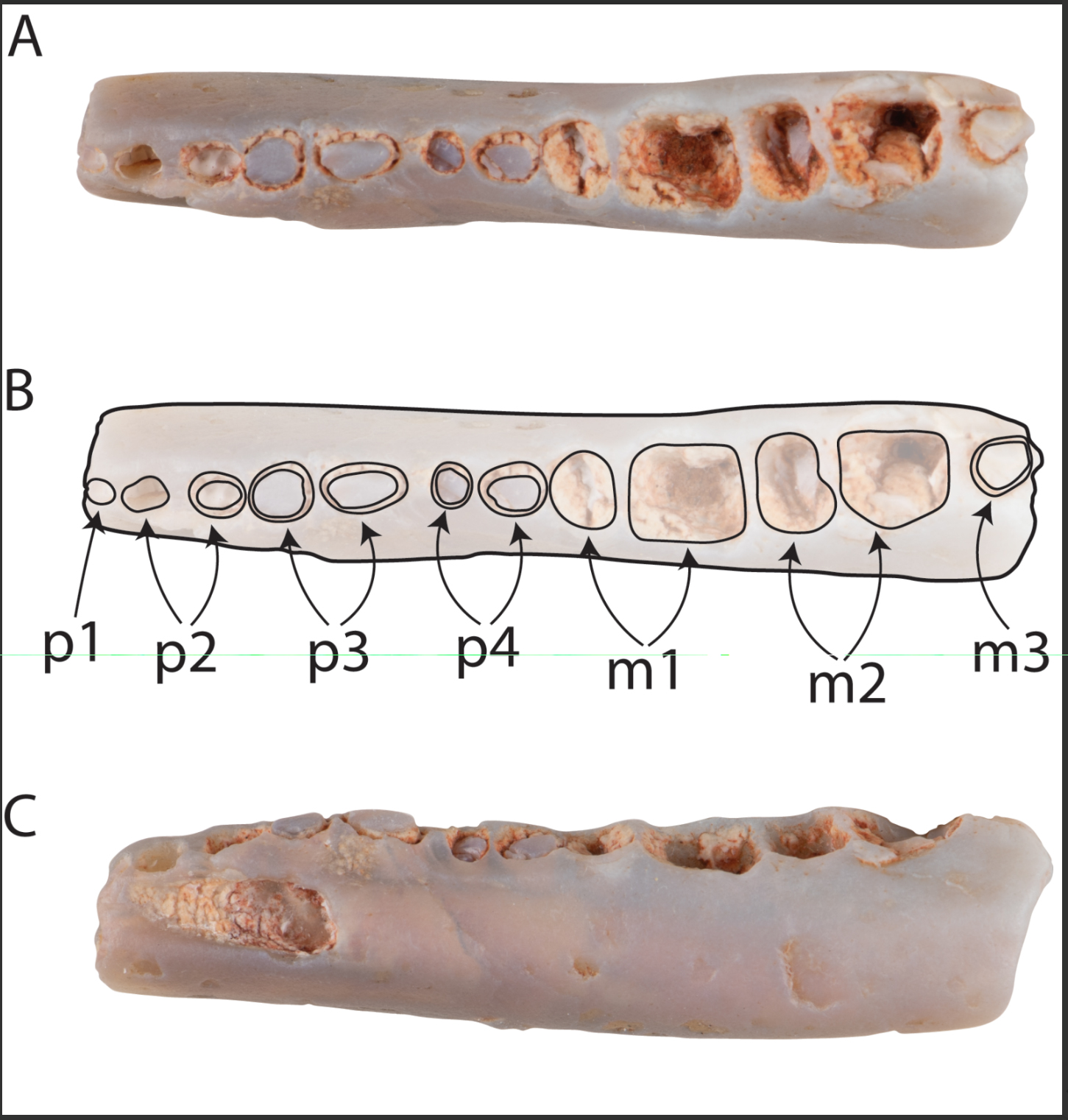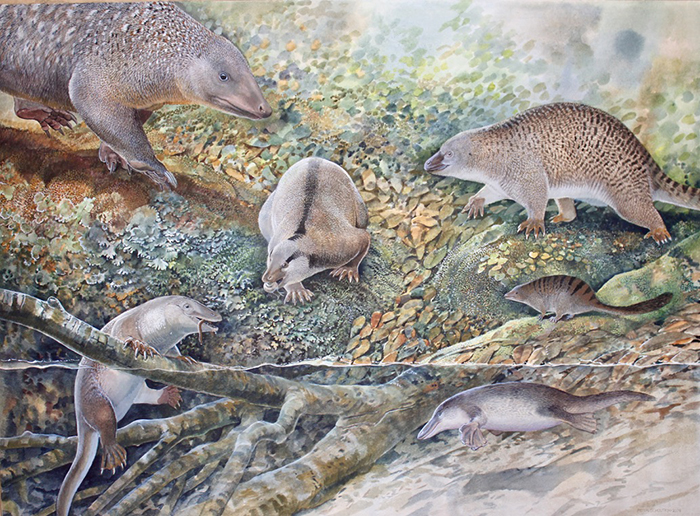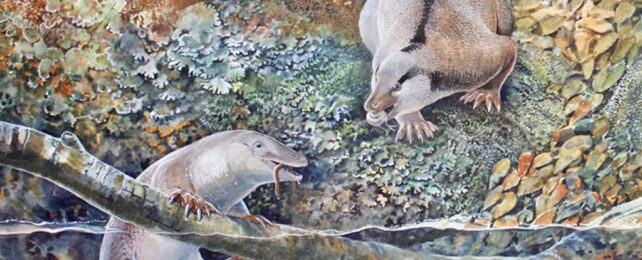As bones encased in rock rotted away, water-borne silica seeped into the crevices, solidifying into opal and preserving precious details for 100 million years. The resulting fossils now provide evidence that there really may have been an Age of Monotremes, before other mammals came to dominate.
"It's like discovering a whole new civilization," says Australian Museum paleontologist Tim Flannery.
"Today, Australia is known as a land of marsupials, but discovering these new fossils is the first indication that Australia was previously home to a diversity of monotremes."
Only five of these rare mammals still cling to existence: one platypus and four echidna species, shared between Australia and Papua New Guinea. But due to their reptilian-like egg-laying feature, it has long been thought these animals evolved before placental mammals like us and marsupials.

"It may be guessed that, wherever they originated, monotremes radiated in Australia before marsupials did, and that the old Australian monotreme fauna may have been at least as diverse as the later marsupial fauna… " naturalist Philip Jackson Darlington speculated back in 1957.
While this theory is widely accepted, fossil evidence has remained scarce.
Now, three newly discovered monotremes bring the total of fossil species known in this one place and time period to six, proving there really was some diversity among these furry egg-layers. The new finds range from the size of a small possum to that of a cat, Flannery told James Woodford at New Scientist.
Australia's Lightning Ridge in northeastern New South Wales, where the fossils were found, now has the most diverse range of monotreme fossils on record, all from the Cenomanian period between roughly 100 and 95 million years ago.
"Four species are known from a single specimen, suggesting that diversity remains underrepresented. This discovery adds more than 20 percent to the previously known diversity of monotremes," says Australian Museum paleontologist Matthew McCurry.

Among the new fossils is the toothy 'echidnapus' (Opalios splendens), who, as its nickname suggests, shares characteristics of both echidnas and platypuses. It has the long narrow snout of an echidna but also some features of a platypus, like complex electroreception.
"The story of how our egg-laying mammals evolved is 'toothy to toothless'," describes Australian Museum mammologist Kris Helgen.
"The oldest monotreme, Teinolophos trusleri, which dates back to Victoria 130 million years ago, had five molars in each jaw. What we see at Lightning Ridge is that by 100 million years ago, some of the monotremes still have five molars but some of them are down to three."
Modern echidnas have no teeth and platypuses lose theirs before they fully mature.
Flannery and colleagues also describe the tiniest known monotreme, Parvopalus clytiei, and Dharragarra aurora, which has a similar jaw to modern platypuses, in their new paper. These join the three previously discovered ancient Lightning Ridge monotremes: Kollikodon ritchiei, Steropodon galmani, and Stirtodon elizabethae, the largest known monotreme.
So far researchers have found no other signs of mammals from this period, suggesting that monotremes really may have been alone amongst the dinosaurs of that era. However, a more extensive fossil assemblage that includes other sites will be needed to confirm this theory.
This research was published in Alcheringa: An Australasian Journal of Palaeontology.
